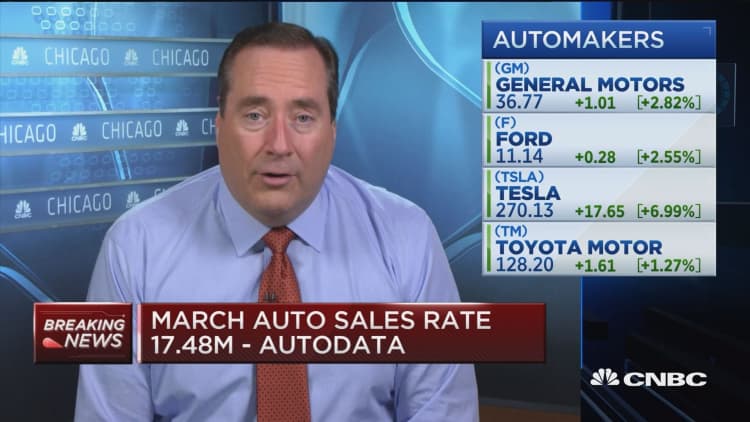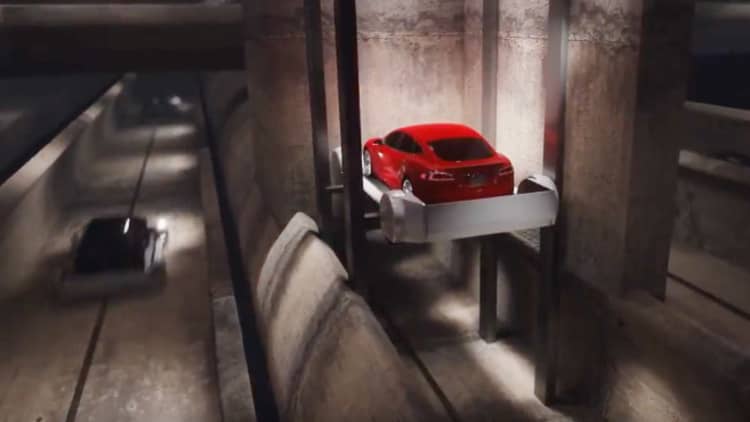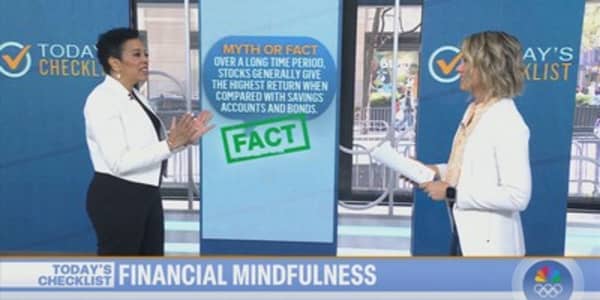Anyone planning to go new-car shopping for the first time in a while might want to prepare themselves for sticker shock.
A combination of higher auto prices, longer loans and climbing interest rates means a buyer who finances their purchase could pay about $6,500 more than they would have five years ago, according to research from Edmunds.com.
"This is pretty much across the board," said Matt Jones, senior consumer advice editor at Edmunds.com. "When you put those three things together, people are going to be paying a lot more."
The first hit: Pricier autos.
The average price paid for a new car reached $34,623 in March, according to Edmunds. Five years ago, that number was $31,078.
Then there are the loans, which can be a triple whammy.
Rising interest rates make borrowing more expensive. Last month, interest rates on new-car loans stood at 5.7 percent, up from 4.4 percent in March 2013.
And as prices have risen, consumers have been financing larger balances: An average $31,020, compared with $26,533 five years ago.
Plus, they're taking on loans over a longer period of time. The average auto loan length is now 69.5 months compared with 65.7 months in March 2013. Generally, the longer the loan term, the more you'll pay in interest.
The cost of buying a car
| Loan aspect | March 2018 | March 2013 |
|---|---|---|
| Average length (in months) | 69.5 | 65.7 |
| Average monthly payment | $525 | $455 |
| Average amount financed | $31,020 | $26,533 |
| Average interest rate | 5.70% | 4.40% |
| Total finance charges | $5,474 | $3,372 |
| Total cost | $36,494 | $29,905 |
Source: Source: Edmunds.com
Part of the reason that costs have climbed is consumers' continuing preference for larger vehicles like SUVs and pickup trucks, which come with higher prices.
For example, the average price on a compact car is $20,444, according to Kelley Blue Book. In comparison, a mid-size SUV/crossover runs an average of $38,541 and a full-size pickup truck would set you back $47,069.
Added technology and safety features included in new models push prices up further.
For consumers with poor credit, the financing cost shifts are especially pronounced. A buyer who finances about $31,000 and pays 11.4 percent in interest for a 69.5-month loan would end up shelling out $11,501 in interest charges. That's $6,027 more than at 5.7 percent.

Here are some tips for containing costs.
Choose backups
Often, car shoppers zero in a car they want and don't seriously consider other options.
"We're telling people to have a second and third choice," Jones said. "What if the interest rate is better on them? If you can save money over the years of your loan, maybe your backup choice is actually a better option."
Part of looking around means checking in with a number of dealerships, because there can be differences in the deals they offer. Additionally, you can shop around for pre-approval from a lender. That way, you have a backup if a dealership cannot offer a better interest rate with its financing options.
Aim lower
The easiest way to save money on a car? Buy a less expensive vehicle.
"Sometimes when people buy a car and they love it, after six months of driving it, it's just a car," Jones said. "A less expensive car might be as good an option."
In other words, new cars don't stay new. They get dirty, need oil changes, and might not be as exciting a possession after the novelty of owning it wears off.
At that point, the commitment you've made to make payments every month for five years or more might not look so appealing.
Sometimes when people buy a car and they love it, after six months of driving it, it's just a car.Matt JonesSenior consumer advice editor at Edmunds.com
Keep in mind, too, that new cars generally lose about 10 percent of their value once driven off the lot.
Consider leasing
Leasing can be a way to get the car you want at a lower monthly price.
The monthly payments on a lease averaged $120 less than those of traditional auto loans in 2016, Edmunds research shows. For large pickup trucks, which tend to retain more of their value than many vehicles, lease payments averaged $206 less than the average traditional loan payment.
However, a car lease comes with mileage limits, typically about 12,000 annually. If you're over the limit at the end of the lease, you'll pay anywhere from about 15 cents to 25 cents for each extra mile you put on the car. At that rate, each 1,000 extra miles would cost somewhere between $150 and $250.
Additionally, the car is expected to be returned at the end of the lease with only normal wear and tear. Going with a lease also means going through the car-buying process again in a few years.
"Leases aren't for everybody, but if the goal is to save money, it's an option to consider," Jones said.
More from Your Money, Your Future:
When you make $2.13 an hour, tips really, really matter
Dog owners, here's what you need to know about liability insurance
The top five spots for Gen Xers and younger boomers seeking a fresh start
WATCH: Elon Musk's new underground tunnel project will transport cars at 125 mph







